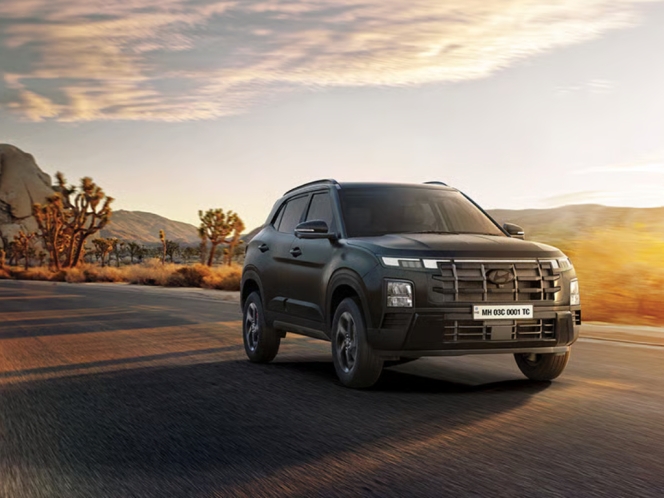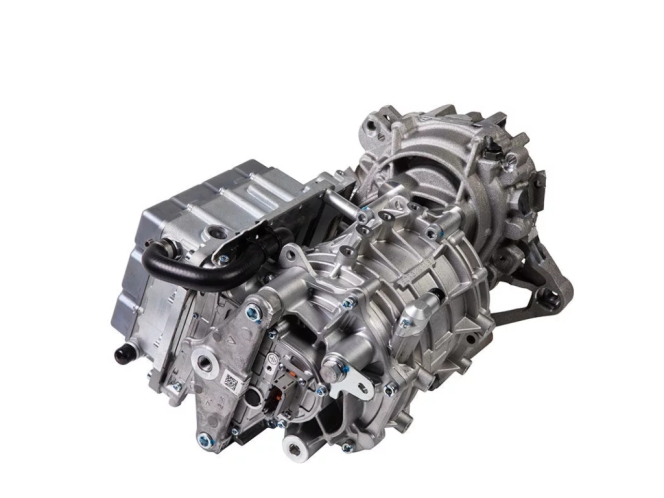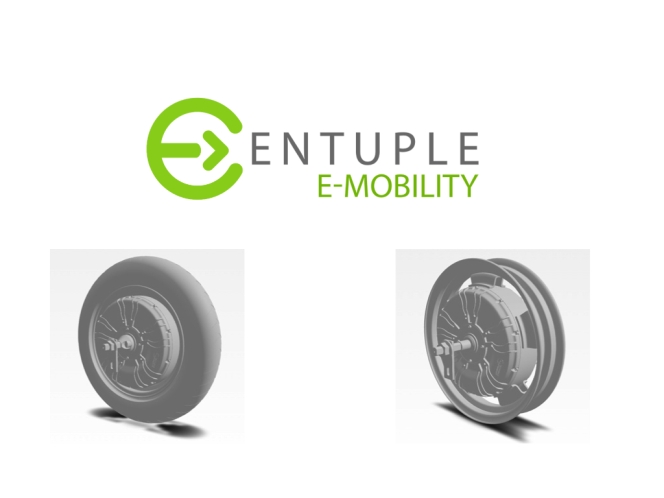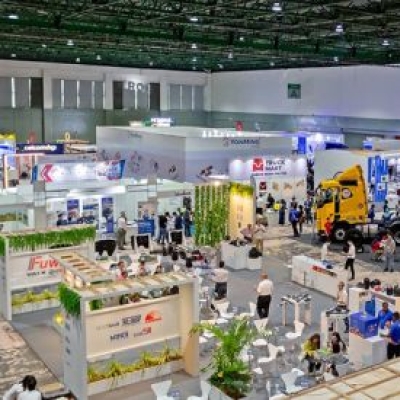Rajupalepu to lead Stellantis Global Digital Hub in India
- By MT Bureau
- May 26, 2022

Stellantis has named Rahul Rajupalepu as the new head of its Global Digital Hub in India. He succeeds Karim Lalani, who has taken up a new role as the Chief Technology Officer - North America ICT and Digital within the Stellantis Group. Rahul joins Stellantis with nearly three decades of experience in IT and has held several leadership positions in the automotive and BFSI industries before taking up the mandate to lead Stellantis' Global Digital Hub in India, the company said in a statement.
In his new role Rahul will be responsible for leading and driving the business growth of the centre to accelerate digital transformation initiatives and build deep technology expertise for Stellantis globally, the release said.
Daria Colvett, CIO of Stellantis North America ICT and Digital, said, "With his track record of leading across Global Capability Centres, technology experience, and industry expertise, we believe Rahul is an ideal choice to lead the Stellantis Global Digital Hub on its next chapter of growth. I wish him success as he shapes the trajectory of the Centre and our role within the industry."
Rajupalepu said, “It’s an honour to lead the Global Digital Hub in its pivotal role in driving Stellantis’ transformation journey towards becoming a sustainable mobility tech company. I am excited to be a part of this journey and looking forward to working with the talented employees and partners to rapidly scale our operations.”
Since its incubation, the Global Digital Hub in India has grown steadily to become one of the largest in-house ICT and digital organisations of Stellantis. With a team of more than 500 skilled engineers, the Centre houses strong competencies in various Digital skills, Digital Transformation initiatives, Industry 4.0 initiatives and Cyber security areas, the release added. (MT)
Hyundai Creta Attains Highest Yearly Sales Surpassing 200,000 Units In CY2025
- By MT Bureau
- December 31, 2025

Hyundai Motor India (HMIL) has announced that its popular SUV the Creta has surpassed 200,000 units sales in CY2025.
This figure represents the highest annual sales volume for the vehicle since its introduction. This translates to an average of 550 units sold per day, maintaining the model's position in the mid-size SUV segment with a market share exceeding 34 percent.
Marking a decade on Indian roads, the SUV achieved a compound annual growth rate (CAGR) of over 9 percent between 2016 and 2025. Hyundai Motor India stated that its internal data reveals a shift in buyer demographics, with first-time buyers increasing from 13 percent in 2020 to 32 percent in 2025. Product trends within the range show that variants equipped with a sunroof accounted for over 70 percent of sales in 2025, while diesel powertrains maintained a 44 percent share of total volume.
At present, the Creta can be had with a 1.5-litre petrol, 1.5-litre diesel and 1.5-litre turbo petrol engines, as well as an electric (EV) variant. Transmission choices include manual, IVT, automatic and DCT. The model remains the highest-selling mid-size SUV in the country on a cumulative basis for the period between 2020 and 2025.
Tarun Garg, Managing Director & CEO designate, Hyundai Motor India, said “Hyundai Creta journey in India is nothing short of extraordinary and achieving highest-ever annual sales of more than 2 lakhs units is a proud and defining moment for all of us at Hyundai. It is also the highest selling SUV of our country on a cumulative basis from 2020-2025. Infact, over the past 10 years of its journey in India, Creta’s customer base has grown manifold, transforming it from a capable SUV into a trusted companion for every journey. The brand’s momentum also reflects in the rise of first-time buyers - from 13 percent in 2020 to an impressive 32 percent in 2025. Aspirations of Creta customers have also evolved over the years, with sunroof-equipped variants contributing more than 70 percent of Creta’s sales in 2025. In addition, the diesel powertrain contributes a strong 44 percent share to Creta sales. We are deeply grateful to our customers and dealer partners for making Creta a symbol of Hyundai’s trust, innovation and commitment.”
MapmyIndia Adds Multimodal Public Transport Routes To Mappls App
- By MT Bureau
- December 30, 2025

MapmyIndia Mappls has expanded its Mappls App by integrating multimodal public transport routes. The update allows users to access information for metro, rail and bus services within the application.
The feature enables the 40 million users of the platform to view stations, stops and interchange options. The service is currently available in cities including Delhi, Mumbai, Bengaluru, Chennai, Hyderabad and Kolkata, among others. The update is live on iOS and web platforms, with an Android release scheduled to follow.
The public transport data joins existing app features such as turn-by-turn navigation, traffic updates and safety alerts. By combining private and public transport data, the company aims to assist in journey planning and support mass transit adoption to manage urban congestion.
As an indigenous platform, MapmyIndia aligns its mapping data with government guidelines regarding international borders and sensitive establishments. The government sector currently accounts for 20 percent of the company's gross revenue.
Rakesh Verma, Co-Founder, Chairman & Managing Director, MapmyIndia Mappls, said, “The launch of multimodal public transport routes on the Mappls App is a direct outcome of listening to our users. We want the Mappls App to be more inclusive and accessible for every citizen. We are pleased to begin rolling out this feature across select cities and will continue expanding coverage to make public transport more convenient for millions of Indians. As a fully indigenous platform built in India for India, Mappls remains committed to supporting sustainable urban mobility by seamlessly integrating public transport into everyday navigation.”
The company plans to expand the coverage of this feature to additional cities to further integrate public transport into its navigation ecosystem.
REE Automotive, BorgWarner’s Cascadia Motion Partner On Electric Drive Unit Development
- By MT Bureau
- December 30, 2025

Israel-headquartered REE Automotive has signed a non-binding Memorandum of Understanding (MOU) with Cascadia Motion, a subsidiary of BorgWarner Inc., to develop and manufacture a next-generation electric drive unit (EDU).
The partnership focuses on integrating Cascadia Motion’s iM-125 motor and inverter with REEcorner technology. The resulting EDU is intended for global original equipment manufacturer (OEM) electrification programmes, providing a modular solution for software-defined vehicles (SDVs).
The proposed EDU is designed to support ASIL-D functional safety standards and features a zonal architecture. This system uses centralised control units to replace legacy domain systems, reducing wiring and enabling over-the-air (OTA) updates.
Technical Specifications (at Gearbox Output):
- Motor Type: Permanent Magnet
- Peak Torque (30s): 3000 Nm
- Peak Power: 100 kW
- Gear Ratio: 19.17
- Weight: 54 kg
- Cooling: Water-Glycol
REE plans to grant Cascadia Motion access to its existing assembly lines, tooling and supplier networks to facilitate production. The companies also intend to evaluate market demand for complete SDV solutions, including standalone REEcorner units and chassis control software.
The collaboration occurs as industry research suggests the global EDU market will grow at a compound annual growth rate (CAGR) of 9 percent between 2025 and 2035. The move is aimed at helping OEMs reduce development cycles for electric vehicles through ready-to-integrate hardware.
Joseph McHenry, General Manager, BorgWarner Portland, said, “Integrating Cascadia Motion’s iM 125 drive unit with REEcorner technology bolsters our portfolio of off-the-shelf electric drive solutions, providing our customers with even more flexibility in their electrification programs. This collaboration reflects our commitment to delivering innovative, ready-to-integrate drive units that help OEMs reduce development time and streamline vehicle launch.”
Daniel Barel, CEO and Co-Founder, REE Automotive, said, “We believe that this MoU with Cascadia Motions represents a natural progression of our three-year collaboration and reinforces our mission to accelerate the industry’s transition to software-defined, by-wire mobility. We believe this collaboration positions us to meet global demand at scale while laying the groundwork for next-generation, fully by-wire solutions.”
- Entuple E-Mobility
- Blue Ashva Capital
- Varanium Capital
- Roop Automotive
- Mohit Oswal
- Rakesh Mishra
- Satya Bansal
Entuple E-Mobility Raises INR 130 Million To Expand Powertrain Portfolio
- By MT Bureau
- December 29, 2025

Bengaluru-based electric powertrain start-up Entuple E-Mobility has raised INR 130 million in a funding round led by Varanium Capital, which also participation from existing investors Blue Ashva Capital, alongside high-net-worth individuals and family offices, including Mohit Oswal, founder of Roop Automotives.
The start-up operates a 25,000 sqft manufacturing plant in Bengaluru, where it produces hub and mid-motor powertrains for two- and three-wheelers. Entuple develops its motors, controllers and firmware in-house without external licensing.
The funding will be used to advance the company's technology stack and expand into new vehicle segments. Key areas of focus include:
- High-Voltage Systems: Development of motors for four-wheelers, buses and trucks.
- Power Electronics: Research and development into new-generation intelligent motor controllers.
- Commercial Vehicles: Engineering powertrains specifically for the heavy-duty commercial segment.
By deepening its indigenous technology, Entuple aims to provide powertrain solutions for original equipment manufacturers (OEMs) in India and international markets.
Rakesh Mishra, Founder and CEO, Entuple E-Mobility, said, “This round enables us to double down on high-voltage powertrain platforms for four-wheelers, passenger vehicles, and commercial vehicles while continuing to strengthen our core IP in motors, power electronics, and controls. We are excited to partner with Varanium Capital and our existing investors as we scale from proven 2W/3W solutions to becoming a key technology enabler for the next generation of EV programs in India and beyond.”
Satya Bansal, Founder & CEO, Blue Ashva Capital, said, “We reinforce our confidence by further participating in the current fund raise. In a market often relying on assembled solutions, Entuple differentiates itself by engineering superior technology fully designed and developed in India. This is one of the best design and engineering teams in the motor and controller space in the country, which was largely dominated by imported or assembled components in India so far.”






Comments (0)
ADD COMMENT